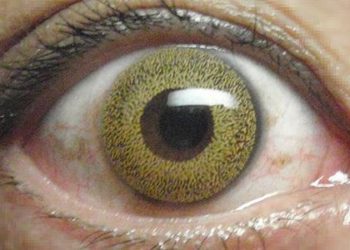No increased overall risk of systemic events with use of anti-VEGF eye treatments
1. There was no overall increase in systemic cardiovascular events with the use of antibodies to vascular endothelial growth factor (anti-VEGF) therapies in the eye (Avastin or Lucentis).
2. Subgroup analysis indicated a significant increase in clot formation with Avastin use and an increase in bleeding with age-related macular degeneration (AMD) patients treated with Lucentis.
Evidence Rating Level: 1 (Excellent)
Study Rundown: AMD, diabetic macular edema, and retinal vein occlusion are major causes of vision loss among the elderly. Treatment for these conditions often involves injections of anti-VEGF into the eye. Both ranibizumab (Lucentis) and bevacizumab (Avastin) are commonly used anti-VEGF antibodies. Use of these antibodies in other situations is known to increase the risk of cardiovascular events, strokes, clot formation, and severe bleeding. This analysis reviewed multiple randomized controlled trials (RCTs) that evaluated any association between these ophthalmic treatments and systemic complications. The authors found that when analyzing the data, there was no overall increase in major heart-related events, strokes, or bleeding with the use of the anti-VEGF antibodies. However, there was a substantial increase in clot formation with the use of Avastin and in bleeding events in AMD patients treated with Lucentis. These findings need to be evaluated cautiously, as they were based on fewer studies with smaller patient populations. Further evaluation of safety profiles of these medications is needed.
Click to read the study in JAMA Ophthalmology
Relevant Reading: The Price of Sight — Ranibizumab, Bevacizumab, and the Treatment of Macular Degeneration
In-Depth [meta-analysis]: After review, 21 RCTs were evaluated, which included over 9,000 patients. End-points included myocardial infarction, nonocular hemorrhage, stroke, death from vascular cause, venothrombolic events (VTE), and hypertension. There was no significant increase in risk of cardiovascular events with the use of anti-VEGF treatments (OR 1.18; 95% CI 0.81-1.71), nor in nonocular hemorrhagic events (OR 1.42; 95% CI, 0.95-2.13) compared to placebo treatment. In trials comparing Avastin to Lucentis, the former was strongly associated with VTEs (OR 3.45; 95% CI, 1.25-9.54). Subgroup analysis also demonstrated an increased risk of nonocular hemorrhages in AMD patients treated with Lucentis compared to placebo (OR 1.57; 95% CI 1.01-2.44). These findings are suggestive of concerns with the safety profiles of these medications, which would warrant further study.
More from this author: Argus II retinal prosthesis significantly improves spatial vision in blind patients, Artificial cornea is well retained in patients with ocular surface disease, High prevalence of undiagnosed glaucoma in West Africa, Interferon therapy is superior to methotrexate for uveitis, Rho kinase inhibitor safely reduces intraocular pressure
Image: PD
©2012-2014 2minutemedicine.com. All rights reserved. No works may be reproduced without expressed written consent from 2minutemedicine.com. Disclaimer: We present factual information directly from peer reviewed medical journals. No post should be construed as medical advice and is not intended as such by the authors, editors, staff or by 2minutemedicine.com. PLEASE SEE A HEALTHCARE PROVIDER IN YOUR AREA IF YOU SEEK MEDICAL ADVICE OF ANY SORT.







